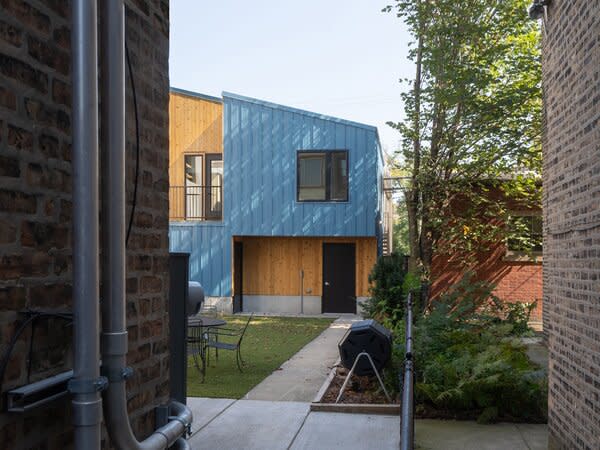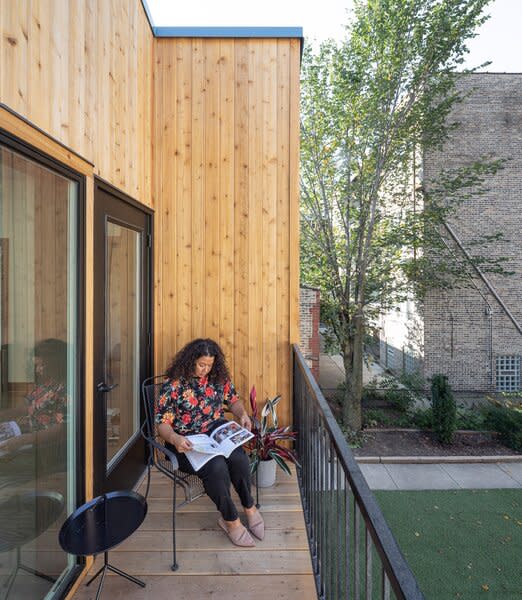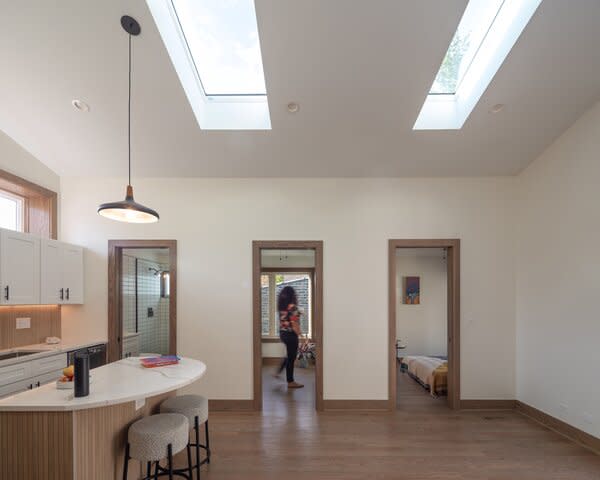ADUs Might Not Be Making Chicago More Affordable, But They Might Make It More Sustainable
An all-electric project by Latent Design isn’t exactly cheap, but it keeps fossil fuels out of the home.

There hasn’t exactly been an explosion of new accessory dwelling units (ADUs) in Chicago since its city council passed an ADU pilot ordinance in 2020, which allows for new coach houses and basement or attic renovations to add additional units in certain parts of the city. The ordinance intends to allow homeowners to make multigenerational living arrangements or extra income with their existing property; proponents also advocated for ADUs as a means to build more affordable housing—a principle yet to be realized. However, the growing awareness of "going electric," coupled with the opportunity to rehab and add units via the ADU ordinance, has made way for experiments in all-electric households.
A recently completed rear coach house by Chicago firm Latent Design is one such project. Working with a newly married couple, the firm has produced a sunny, arguably spacious, all-electric unit that touts smart design moves through a sea of regulations.
Latent, led by architect Katherine Darnstadt, was brought in to help a North Side couple rehab a three-flat apartment building and design an ADU atop the lot’s rear garage for their mother-in-law. The couple took a six-month honeymoon while their unit in the main building was rehabbed—the beginning of a long process to electrify each unit—which provided enough time to strategize around the forthcoming ADU and get the new structure permitted. But designing a comfortable coach house isn’t simple, Darnstadt implies, due to various setback requirements and size minimums for the backyard area. This client was in luck: Unlike most Chicago lots that are 25 feet wide, theirs was 30.
"Because we have this extra square footage that we can utilize, we were able to create this volume of a building that maximizes the parameters allowed per the zoning code and then carve away voids for both a second-floor deck and then another void for the entry to both the garage and the stairs to lead you up to the ADU," Darnstadt says. Unlike most coach houses, which could only be 600 square feet due to typical lot sizes and code restrictions, Latent’s ADU was able to reach 700 square feet.
The floorplan is thus able to include a larger living space, a full bath and bedroom, and an additional den that could also be a guest bedroom. The kitchen includes full-size appliances and a semicircular island for seating. "You could easily have two people living in there—a family with a kid. The mother-in-law could have guests or an arts-and-crafts room. There’s a whole other space, which is the benefit of being able to utilize the full 700 square feet," Darnstadt explains. Thoughtful details, including drawers built into the stairs, make the most of the full space.
See the full story on Dwell.com: ADUs Might Not Be Making Chicago More Affordable, But They Might Make It More Sustainable
Related stories:




